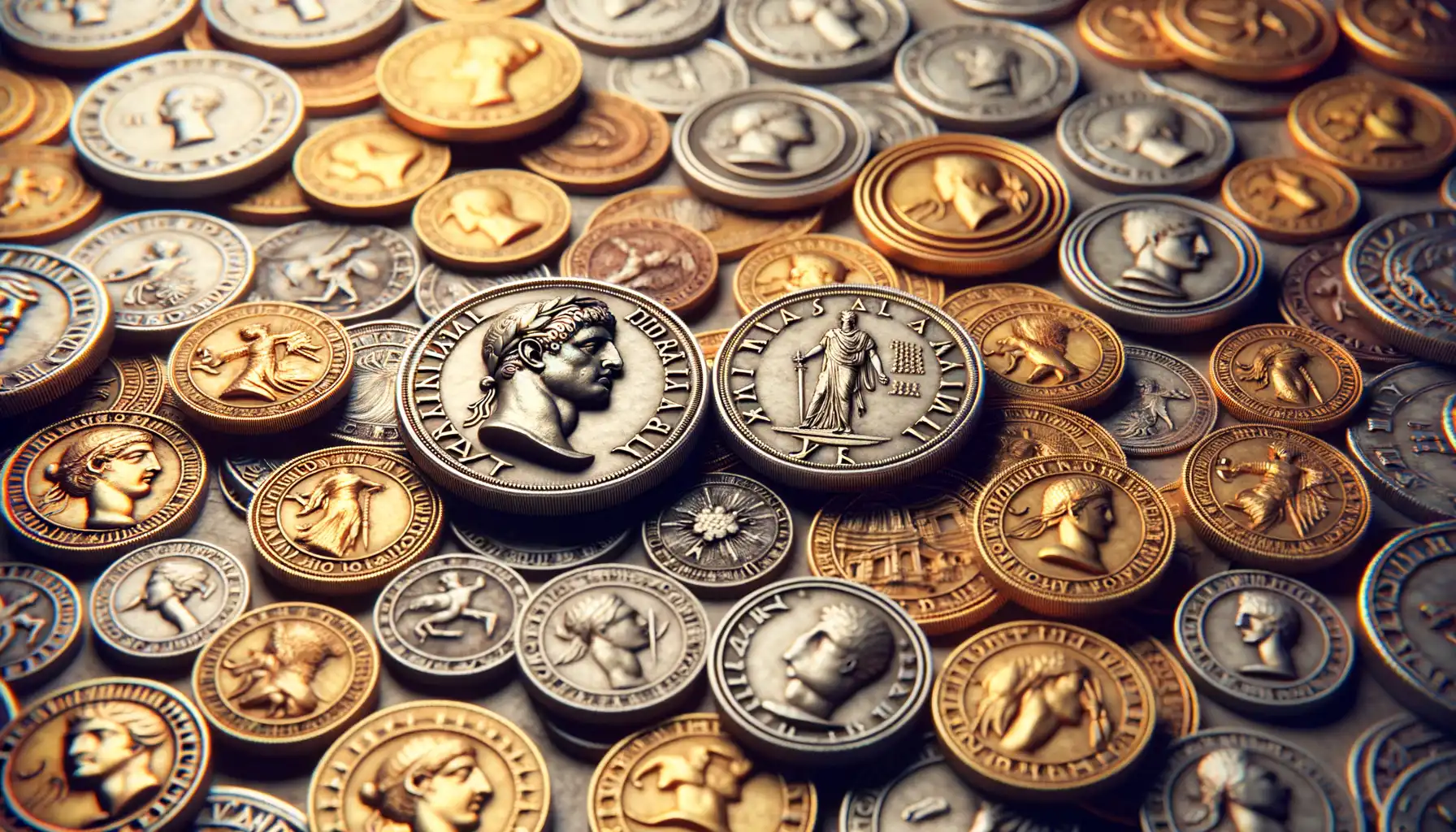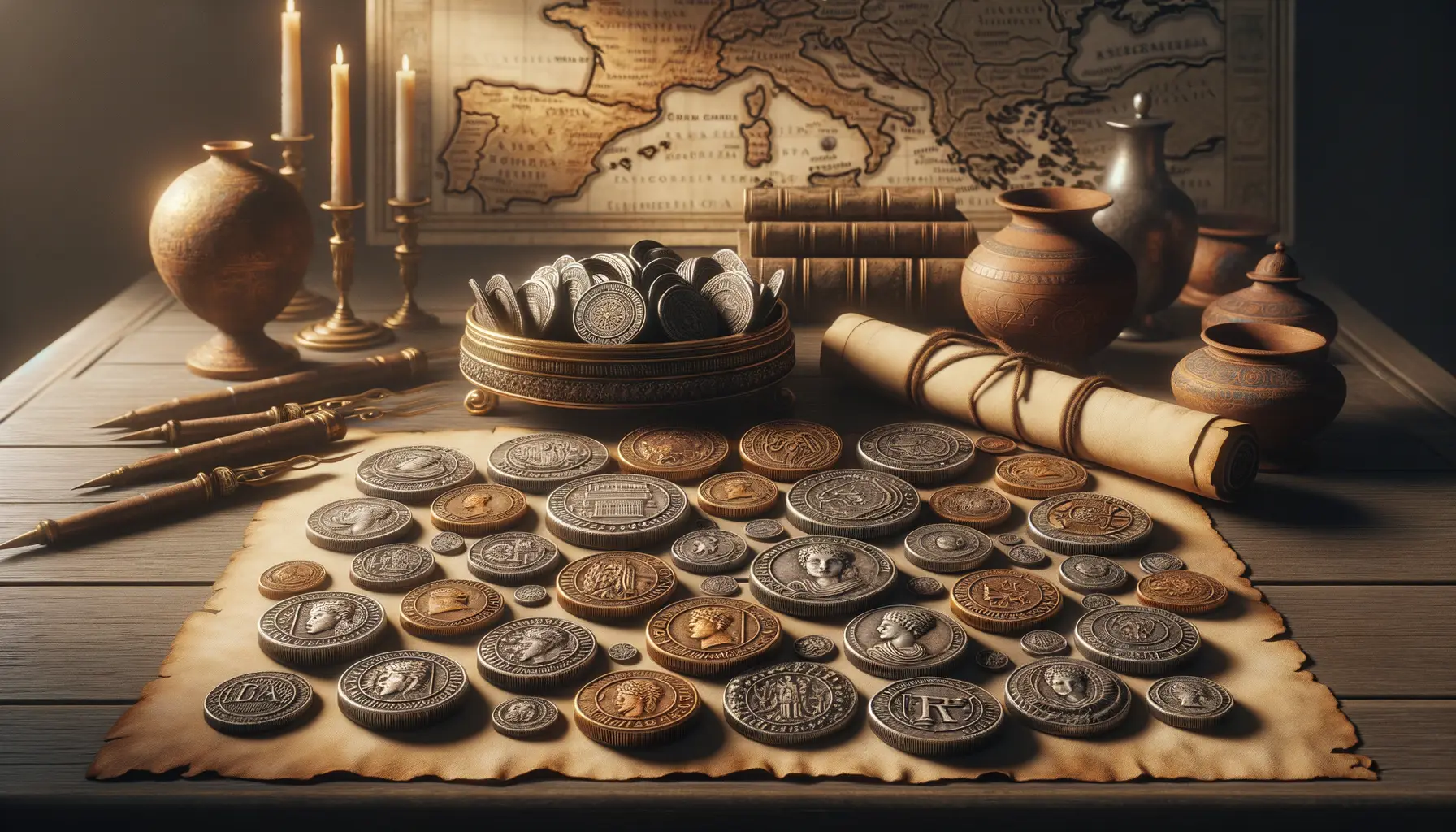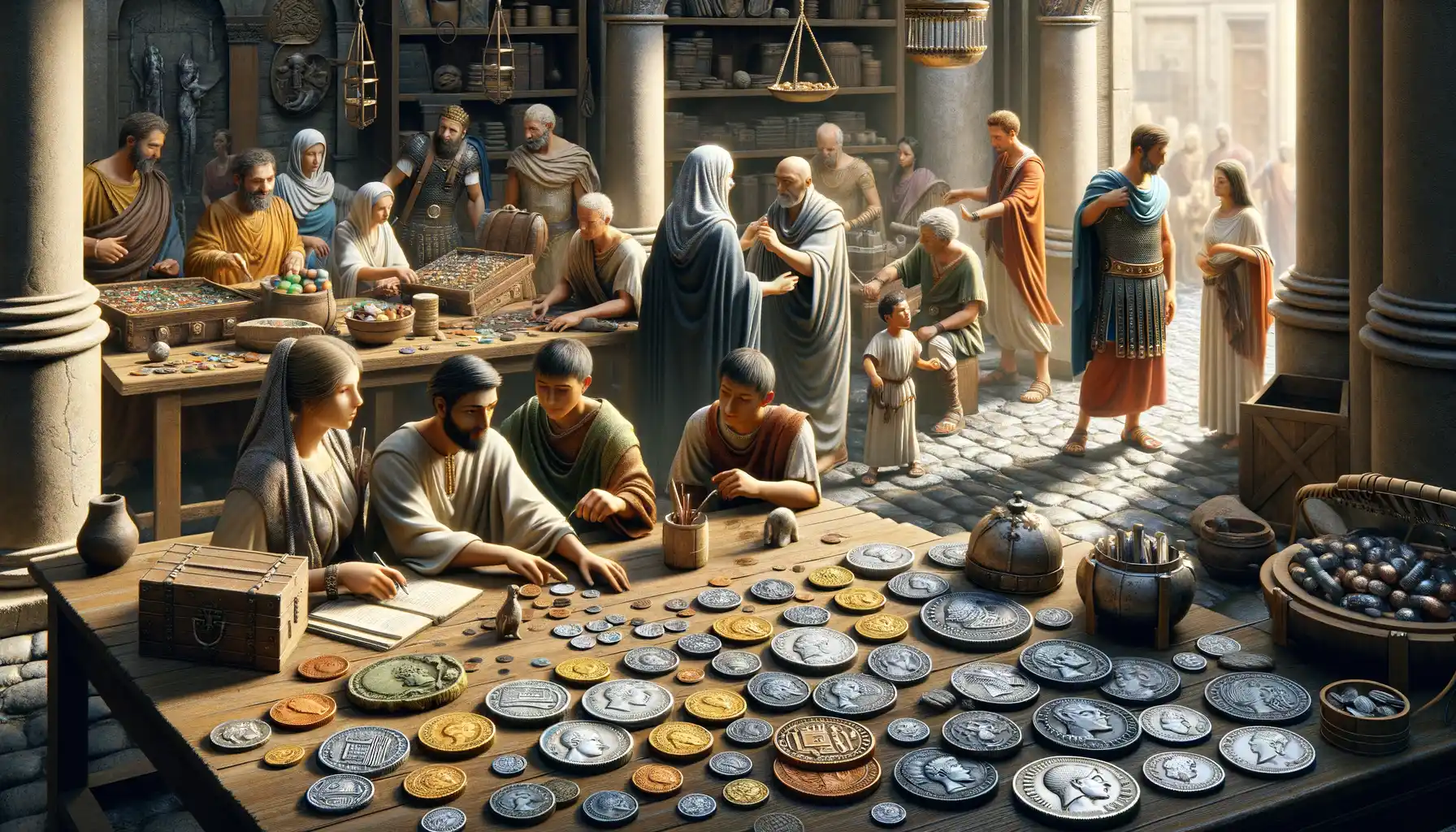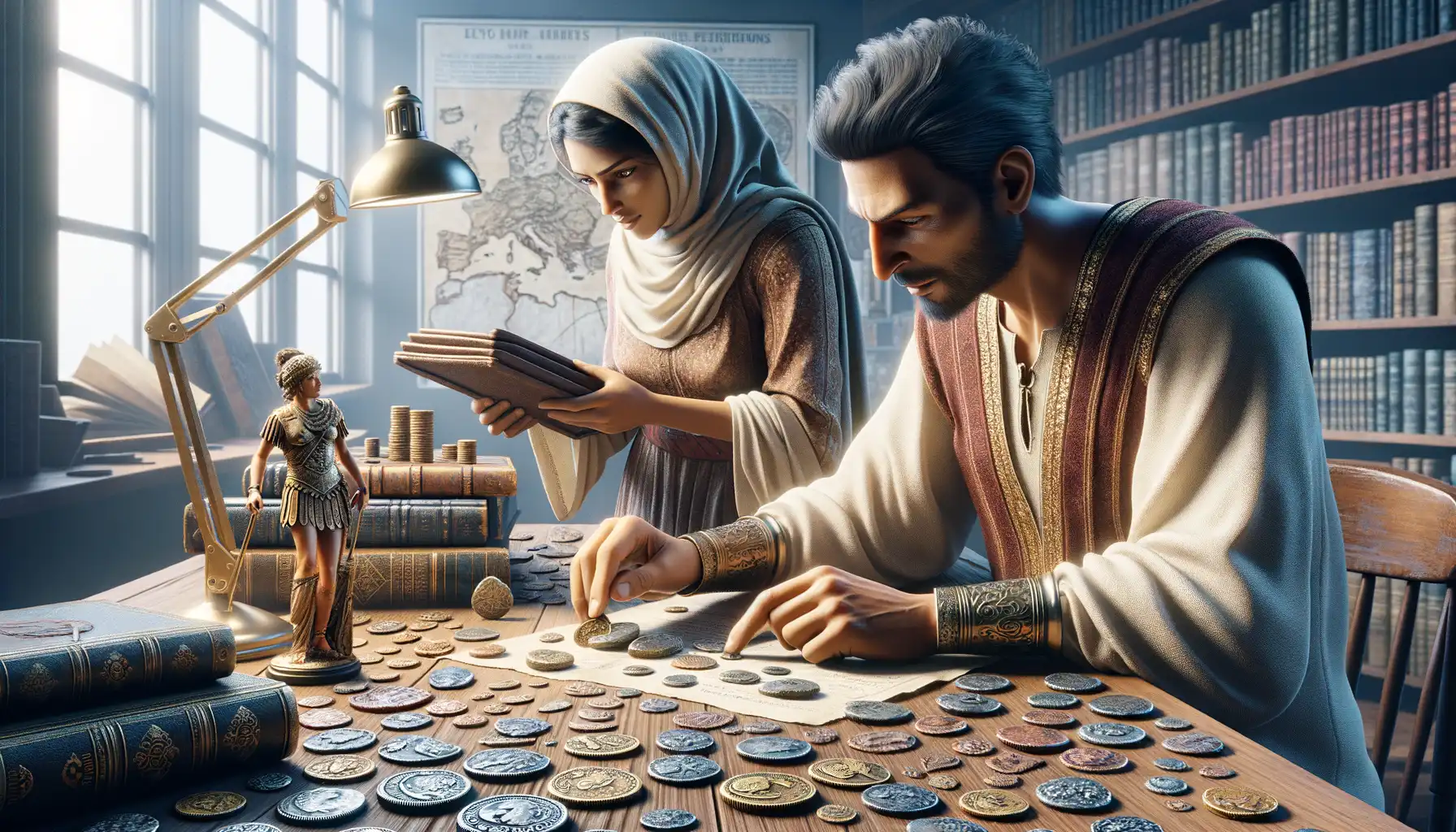Introduction to Roman Coins and Their Historical Significance
Unlocking Doors to the Past Through Roman Coins
Imagine holding a piece of history in the palm of your hand—an object that once passed through bustling Roman marketplaces, paid soldiers’ wages, or rested in the pockets of emperors. This is the magic of Roman coins. These small, intricate treasures are far more than mere currency; they’re time capsules, whispering secrets of an empire that shaped the ancient world.
From the gleaming silver denarii to the humble bronze follis, Roman coins tell stories. Each design reveals a snapshot of its era: portraits of emperors radiating power, mythological gods offering divine protection, and symbolic motifs celebrating military victories. The beauty lies in their detail—imagine the artisans who carved these designs by hand over 2,000 years ago!
- The laurel-wreathed profile of Julius Caesar, minted just before his fateful assassination.
- Coins showing Constantine the Great with Christian symbols, marking Rome’s monumental shift towards Christianity.
Every coin carries the weight of history. It’s fascinating to think that what we now see as collectibles once played pivotal roles in spreading news, propaganda, and political ambitions across an empire that spanned continents.
Key Features and Design Elements of Roman Coins

Artistry in Symbols and Portraits
Roman coins are like tiny, ancient billboards—each one crafted to tell a story or send a message. One of their most captivating features is the striking portraiture. The face of an emperor, goddess, or celebrated hero would often dominate the coin’s surface, their expressions so detailed you might feel they could speak. Imagine holding a denarius with the stern profile of Julius Caesar, his gaze sharp as the blade of history itself. These portraits weren’t arbitrary; they were displays of power, legacy, and even propaganda.
But portraits weren’t the only stars. Flip a Roman coin, and you’re stepping into a swirling world of allegory. On the reverse side, you might find gods and goddesses, symbolic animals, or scenes of military triumph. Each design wasn’t mere decoration—it was a visual manifesto. For instance, a coin depicting Victory standing on a globe wasn’t just beautiful; it proclaimed Rome’s domination of the known world.
The Secret Language of Inscriptions
Roman coins also whisper through their inscriptions. Abbreviations like “SPQR” (Senatus Populusque Romanus) tied each coin to the might of the Roman Senate and people. Here’s a nugget for today’s collectors: decoding these letters feels like solving an ancient mystery. Some inscriptions even celebrated achievements like conquests or public works projects.
To bring the designs into focus, here’s a quick glance at common features:
- Metallic allure: From humble copper to gleaming gold, a coin’s material signified its value and purpose.
- Shape and size: Round, slightly irregular, yet unmistakably robust—these coins were made to last centuries.
Each Roman coin is like a snapshot of its era, teeming with stories and details waiting for curious hands to uncover.
Famous Roman Coins and Their Historical Context

Iconic Coins That Tell the Tales of Rome
Did you know that holding a Roman coin is like holding a fragment of human history in the palm of your hand? Some coins feel so vivid, it’s as if they’re whispering the stories of emperors, battles, and a civilization that once ruled the world. Take the famous Denarius of Julius Caesar, for example. Minted in 44 BCE, this isn’t just any silver piece—it’s the first Roman coin to feature a living person’s portrait! And there he is, Caesar himself, gazing at you from the past, as bold in death as he was in life.
Another gem? The Aureus of Augustus. This gold coin radiates with prosperity, just like the reign of Rome’s first emperor. It celebrates his victory over Mark Antony and Cleopatra, proving that coins weren’t mere currency; they were political propaganda before Twitter existed!
Each coin is a portal, a tactile connection to a world long gone but never forgotten.
The Role of Coinage in Roman Economy and Society

Coins: The Everyday Pulse of Roman Life
Imagine walking through the bustling streets of ancient Rome, the clang of coins echoing in marketplaces, taverns, and temples. Roman coinage wasn’t just a tool for trade; it was the lifeblood of the empire, flowing through every corner of society. These small discs of metal held immense power. Not only did they pay for bread and wine, but they also carried the face of an emperor, a divine message, or even a political statement. In a sense, coins were the empire’s Twitter feed—short, impactful, and impossible to ignore.
For many Romans, coins represented stability in uncertain times. Soldiers received their wages in freshly minted denarii, ensuring their loyalty. Citizens used coins to light oil lamps, buy spices from the East, or gamble at the baths—all moments that tied them together, despite class or heritage.
A Financial Backbone and Political Tool
Roman coinage was far more than shiny objects; it was propaganda with a purpose. Consider this:
- Military victories: Coins often showcased triumphs, like Julius Caesar’s conquest of Gaul.
- Economic control: Emperors regulated coin production to manage inflation or fund massive projects like aqueducts.
- Cultural unity: Imagery on coins—from gods to mythic heroes—reinforced shared identity across vast provinces.
Each coin told a story, binding diverse people into one empire. They jingled not just in money pouches but in the very soul of Roman society.
Collecting and Preserving Roman Coins Today

Why Roman Coins Appeal to Collectors Today
Holding a Roman coin in your hand is like cradling a fragment of ancient history. These coins are not just relics—they’re storytellers, whispering tales of emperors, military victories, and everyday Roman life. Imagine tracing your fingers across the profile of Julius Caesar or the intricate laurel wreath of Augustus. It’s a direct connection to lives lived over 2,000 years ago.
For collectors, each coin is a puzzle piece. You can specialize in coins from a specific emperor, explore regional mints within the empire, or hunt for designs that showcase mythological creatures or propaganda messages. The variety is practically endless.
- Bronze Sestertii with their rich patinas evoke the bustling streets of Rome’s markets.
- Silver denarii glint like treasures once exchanged by legionnaires and merchants.
- And golden Aurei? They still radiate the power and prestige they once symbolized.
Preserving History: Best Practices for Roman Coins
Owning a Roman coin comes with a responsibility: preserving its delicate beauty for future generations. The ancient dirt on a coin, called its “patina,” isn’t grime—it’s part of its identity. Cleaning recklessly could erase centuries of history! Keep coins dry, handle them minimally (preferably with gloves), and store them in soft-lined holders made for antiquities.
For serious collectors, climate-controlled display cases and silica gel packs help maintain optimal conditions. Joining a local numismatic club or researching through the American Numismatic Association can also deepen your appreciation—and teach you priceless tips. Remember, collecting Roman coins is an act of stewardship, where you safeguard traces of a bygone empire for explorers yet to come.